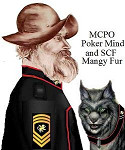Hey RFC I have some questions about the Delthak IIs?
The Delthak IIs the broad side armament has 22 6" / 45s that have tubes 22.5'. OK to get across the ocean you have to bring the cannons inboard to close and seal the shutters right? Well the ships are 40' wide so the gun must cross the center to be brought inboard. They must be secured or you get a loose cannon. Thus they cannot be in line but must be staggered IE:
| | | | | | | | | | |
.| | | | | | | | | | |
So how will these heavy guns be moved and secured carriage on rails?
The 3 feet of free-board fore and aft, does this mean 3' on just the bow and three feet of the casement is under water or does the run all the free-board run all the way way around.
Poker
Also what are the 11" guns? a tail pinned mount with one in the center of the casement to fire on either side and the others in the curved ends of the casement? They can't be longer than 11" /20s and probably shorter Using a turntable mount a 11" /35 might be shoehorned in and still secured for blue water sailing.
RFC wrote:
Delthak II – class broadside ironclad gunboat
Dimensions:
Length (waterline): 160’
Length (overall): 160’
Beam: 40’
Draft (normal): 10’
Draft (full): 10’3”
Armament:
22 x 6”/45 M895 BL guns 3 x 11 x 3 (115-pound AP shell; 200/gun)
Weight of broadside (13 guns): 1,495 pounds
Weight fore or aft (3 guns): 345 pounds
Armor:
Casemate: thickness= 3”; length = 146’; height = 14’; inclined 16˚
Freeboard fore & aft: thickness=3”; length = 14’; height = 4’
Casemate roof/decks: 1”
Conning tower: 6” (no slope)
Machinery:
Coal fired boilers, double-expansion engines, direct drive, 2 shafts, 45 sdp (1,147 shp) = 14 knots (12.2 Old Earth knots)
Range 1,800nm at 9.5 knots (8.25 Old Earth knots)
Range 3,500 nm at 5.7 knots (5 Old Earth knots)
Bunker (normal): 59 tons
Bunker (max displacement): 115 tons
Complement: 158
Cost: CM 168,000
Distribution of weights at normal displacement:
Guns: 281 tons, 18.4 %
Armor: 286 tons, 18.7 %
Machinery: 166 tons, 10.9 %
Hull, fittings & equipment: 448 tons, 29.3 %
Fuel, ammunition & stores: 348 tons, 22.7 %
Overall survivability and seakeeping ability:
Survivability (penetrating hits to sink ship): 17 x 6”/45
Stability (Unstable if below 1.00): 1.81
Metacentric height 3.3 ft / 1.0 m
Roll period: 9.2 seconds
Steadiness as gun platform (Average = 50 %): 68 %
Seaboat quality (Average = 1.00): 1.35
Hull form characteristics:
Hull has low forecastle, low quarterdeck , a normal bow and a round stern
Block coefficient (normal/deep): 0.836 / 0.838
Length to Beam Ratio: 4.00 : 1
'Natural speed' for length: 14.6 knots (12.65 Old Earth knots)s
Power going to wave formation at top speed: 57 %
Trim (Max stability = 0, Max steadiness = 100): 50
Bow angle (Positive = bow angles forward): 0.00 degrees
Stern overhang: 0.00 ft / 0.00 m
Freeboard (% = length of deck as a percentage of waterline length):
- Forecastle: 10.00 %, 4.00 ft
- Forward deck: 30.00 %, 10.00 ft
- Aft deck: 50.00 %, 10.00 ft
- Quarter deck: 10.00 %, 4.00 ft
- Average: 8.80 ft
Ship tends to be wet forward
Ship space, strength and comments:
Space - Hull below water (magazines/engines, low = better): 105.1 %
- Above water (accommodation/working, high = better): 91.7 %
Waterplane Area: 5,823 Square feet
Displacement factor (Displacement / loading): 100 %
Structure weight / hull surface area: 82 lbs/sq ft
Hull strength (Relative):
- Cross-sectional: 1.02
- Longitudinal: 4.66
- Overall: 1.19
Adequate machinery, storage, compartmentation space
Adequate accommodation and workspace room
Good seaboat, rides out heavy weather easily












 and, Mangy Fur the Smart Alick Spacecat.
and, Mangy Fur the Smart Alick Spacecat.